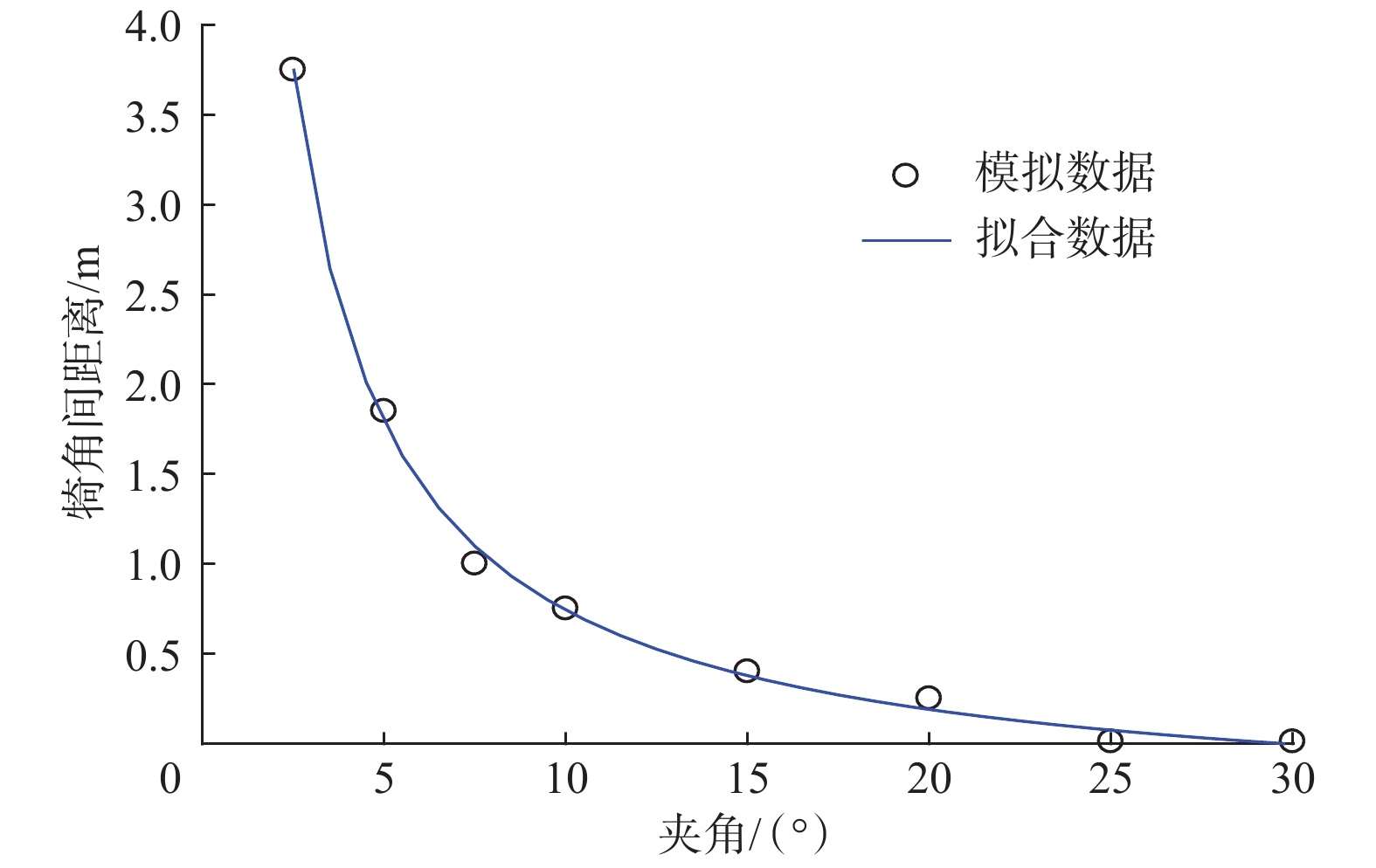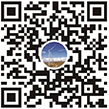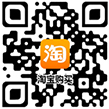Probe into Quantitative Stratigraphic Interface Evaluation Using a Resistivity Imaging LWD Tool
-
摘要:
随钻电阻率成像测井仪不仅可以通过井壁电成像直观显示微小的地质体特征,还具有识别地层界面的能力。为了探索随钻电阻率成像测井仪在界面处的测井响应特征,利用三维有限元方法,研究了其具有方位性时的地层界面测井响应规律,并根据模拟结果建立了地层界面参数定量计算模型。结果表明,该仪器在水平井中不同方位钮扣电极的电阻率测量差值和仪器与地层界面的距离呈较好的幂指数关系;该仪器在斜井中与地层界面的夹角和不同方位钮扣电极电阻率曲线犄角间的最大距离呈幂指数关系,且基本不受地层界面上下地层电阻率对比度的影响。建立的地层界面参数解释模型表明:仪器与地层界面的距离小于1.00 m,可以识别出地层界面;仪器与地层界面夹角小于20°时,可定量计算出二者夹角。研究结果为随钻电阻率成像测井的地质工程应用提供了理论依据。
Abstract:Resistivity imaging LWD tool can not only visually display the characteristics of micro geological bodies through borehole wall electric imaging, but also can identify the formation interface. In order to explore the logging response mechanism of the tool at the interface, this paper studies the logging response law of the azimuthal resistivity imaging LWD tool at formation interface by using the three-dimensional finite element method. In doing so, it established a quantitative calculation model of formation interface parameters according to the simulation results. The results showed that the resistivity measurement difference of different azimuthal button electrodes of the tool exhibited a good power exponent relationship with the distance from tool to the formation interface in horizontal wells. The angle between the tool and formation interface and the maximum distance between resistivity curve spikes of different azimuthal button electrodes was power exponentially in deviated wells, which is not affected by resistivity contrast of the upper and lower strata at the formation interface. The model for the formation interface parameters interpretation indicated that the tool can be recognized within 1.00 m to the horizontal interface, and the angle can be calculated quantitatively when the angle between the tool and formation interface is less than 20 degrees. The research results can provide a theoretical basis for the application of a resistivity imaging LWD tool in geological engineering.
-
-
表 1 地层界面距离相对误差分析
Table 1 Analysis of relative error for formation interfacial distance
Z理论值/m DE,% Z模型计算值/m 相对误差,% 0.100 172.88 0.094 6.00 0.200 80.64 0.183 8.50 0.300 49.77 0.273 9.00 0.400 34.30 0.366 8.50 0.500 24.25 0.474 5.20 0.600 18.03 0.581 3.17 0.700 13.82 0.687 1.86 0.800 10.68 0.798 0.25 0.900 8.41 0.904 0.44 1.000 6.72 1.005 0.50 1.100 5.57 1.087 1.18 1.200 4.57 1.173 2.25 1.300 3.49 1.280 1.54 表 2 模型夹角相对误差分析
Table 2 Analysis of relative error of the model angle
θ理论值/(°) Dmax/m θ模型计算值/(°) 夹角相对误差,% 2.500 3.75 2.505 0.20 5.000 1.85 4.847 3.06 7.500 1.00 8.054 7.39 10.000 0.75 9.926 0.74 15.000 0.40 14.554 2.97 20.000 0.25 18.076 9.62 25.000 0.01 29.005 16.02 30.000 0.01 29.005 3.32 -
[1] 路保平,丁士东,何龙,等. 低渗透油气藏高效开发钻完井技术研究主要进展[J]. 石油钻探技术, 2019, 47(1): 1–7. doi: 10.11911/syztjs.2019027 LU Baoping, DING Shidong, HE Long, et al. Key achievement of drilling & completion technologies for the efficient development of low permeability oil and gas reservoirs[J]. Petroleum Drilling Techniques, 2019, 47(1): 1–7. doi: 10.11911/syztjs.2019027
[2] 李安宗,李启明,朱军,等. 方位侧向电阻率成像随钻测井仪探测特性数值模拟分析[J]. 测井技术, 2014, 38(4): 407–410. doi: 10.3969/j.issn.1004-1338.2014.04.006 LI Anzong, LI Qiming, ZHU Jun, et al. Numerical analysis of logging response for LWD azimuthal laterolog resistivity imaging tool[J]. Well Logging Technology, 2014, 38(4): 407–410. doi: 10.3969/j.issn.1004-1338.2014.04.006
[3] 路保平,倪卫宁. 高精度随钻成像测井关键技术[J]. 石油钻探技术, 2019, 47(3): 148–155. doi: 10.11911/syztjs.2019060 LU Baoping, NI Weining. The key technologies of high precision imaging logging while drilling[J]. Petroleum Drilling Techniques, 2019, 47(3): 148–155. doi: 10.11911/syztjs.2019060
[4] ALLOUCHE M, CHOW S, DUBOURG I, et al. High-resolution images and formation evaluation in slim holes from a new logging-while-drilling azimuthal laterolog device[R]. SPE 131513, 2010.
[5] VAN OS R, DION D, CHEUNG P. Device and method of measuring depth and azimuth: US7873475[P]. 2009-01-18.
[6] KOEPSELL R, SHIM Y H, KOK J C L, et al. Advanced LWD imaging technology in the Niobrara: case study[R]. SPE 143828, 2011.
[7] ORTENZI L, DUBOURG I, VAN OS R, et al. New azimuthal resistivity and high-resolution imager facilitates formation evaluation and well placement of horizontal slim boreholes[J]. Petrophysics, 2011, 53(3): 197–207.
[8] LV Zonggang, PENG Hairun, XIA Qin, et al. Uncovering the potential of thin, tight gas reservoirs in Sichuan Basin, China: new development campaign using new LWD imaging technology and innovative interpretation workflows[R]. SPE 160173, 2012.
[9] PRAMMER M G, MORYS M, KNIZHNIK S, et al. A high-resolution LWD resistivity imaging tool: field testing in vertical and highly deviated boreholes[J]. Petrophysics, 2009, 50(1): 49–66.
[10] KUMAR R, OTAIBI S F, MUMTAZ A, et al. Effective geosteering using high-resolution electrical images and deep azimuthal resistivity[R]. SPE 172179, 2014.
[11] FULDA C, HARTMANN A, GOREK M. High resolution electrical imaging while drilling[R]. SPWLA-2010-46830, 2010.
[12] RITTER R N, CHEMALI R, LOFTS J, et al. High resolution visualization of near wellbore geology using while-drilling electrical images[R]. SPWLA-2004-PP, 2004.
[13] 康正明, 柯式镇, 李新, 等. 钻头电阻率测井仪器探测特性研究[J]. 石油科学通报, 2017, 2(4): 457–465. KANG Zhengming, KE Shizhen, LI Xin, et al. The detection characteristics study of the at-bit resistivity logging tool[J]. Petroleum Science Bulletin, 2017, 2(4): 457–465.
[14] KANG Zhengming, KE Shizhen, LI Xin, et al. 3D FEM simulation of responses of LWD multi-mode resistivity imaging sonde[J]. Applied Geophysics, 2018, 15(3/4): 401–412.
[15] 倪卫宁, 康正明, 路保平, 等. 随钻高分辨率电阻率成像仪器探测特性研究[J]. 石油钻探技术, 2019, 47(2): 114–119. doi: 10.11911/syztjs.2019005 NI Weining, KANG Zhengming, LU Baoping, et al. The detection characteristics of a high resolution resistivity imaging instrument while drilling[J]. Petroleum Drilling Techniques, 2019, 47(2): 114–119. doi: 10.11911/syztjs.2019005
[16] 李铭宇, 柯式镇, 康正明, 等. 螺绕环激励式随钻侧向测井仪测量强度影响因素及响应特性[J]. 石油钻探技术, 2018, 46(1): 128–134. LI Mingyu, KE Shizhen, KANG Zhengming, et al. Influence factors of measured signal intensity and the response characteristics of the toroidal coil excitation LWD laterolog instrument[J]. Petroleum Drilling Techniques, 2018, 46(1): 128–134.
[17] JING Jiankun, KANG Zhengming, KE Shizhen, et al. The imaging resolution effect of LWD resistivity imaging tool using numerical simulation method[R]. EAGE-We_P09_12, 2019.
[18] ARPS J J. Inductive resistivity guard logging apparatus including toroidal coils mounted on a conductive stem: US3305771[P]. 1967-02-21.
[19] GIANZERO S, CHEMALI R, LIN Y, et al. A new resistivity tool for measurement-while-drilling[R]. SPWLA-1985-A, 1985.
[20] 刘国胜,杨海东,汤健超. 复杂地质层中电磁波测井响应特性的数值研究[J]. 中南大学学报(自然科学版), 2013, 44(2): 656–661. LIU Guosheng, YANG Haidong, TANG Jianchao. Numerical investigation for responses of electrical logging-while-drilling in complex formations[J]. Journal of Central South University (Natural Science Edition), 2013, 44(2): 656–661.
[21] CHEN Jiefu. An efficient discontinuous Galerkin finite element method with nested domain decomposition for simulations of microresistivity imaging[J]. Journal of Applied Geophysics, 2015, 114: 116–122. doi: 10.1016/j.jappgeo.2015.01.006
-
期刊类型引用(6)
1. 朱亮,李晓明,纪慧,楼一珊. 基于SAE和LSTM神经网络的深部未钻地层可钻性预测方法. 西安石油大学学报(自然科学版). 2025(01): 39-46+64 .  百度学术
百度学术
2. 叶长文,张琴,董钟骏,陈雪松,李超,梅峻铭,黄梅,彭德军,宋益. 用名义复杂概念和大数据研究区域钻井. 钻采工艺. 2023(06): 184-189 .  百度学术
百度学术
3. 吴丰,谢煜华,王雲,尹晓明,殷召海,童鑫. 厚层状砂砾岩油藏优快钻井关键技术. 石油钻采工艺. 2022(01): 26-30 .  百度学术
百度学术
4. 苏崭,王博,盖京明,李玮,赵欢,陈冰邓. 复合式扭力冲击器在坚硬地层中的应用. 中国煤炭地质. 2021(05): 47-50+57 .  百度学术
百度学术
5. 苏建,袁则名,和鹏飞,宋瑞,吴义标. HPG复合冲击钻井提速工具在渤海油田的应用. 海洋工程装备与技术. 2019(01): 457-464 .  百度学术
百度学术
6. 张进双,张增宝,王学才. 刀翼式孕镶金刚石钻头设计及在哈山101井的应用. 石油钻探技术. 2019(05): 57-61 .  本站查看
本站查看
其他类型引用(2)




 下载:
下载:















